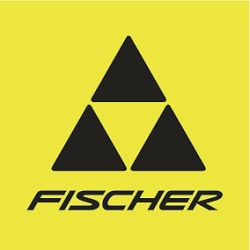
The Fischer RC4 Worldcup RC Pro is the race carver offering from Fischer with a giant slalom touch and feel. Anyone aiming to this kind of ski should definitely take a look at this model. A softened GS model compared to the authentic FIS GS models but with the same taste and from the same source.
The size offering starts at 170 cm and finishes at 185 cm. You’ll find a new size every 5 cm. The turn radius at 175 cm is 18 m. Not very long, not too short. The middle way. If you choose a longer size you´ll be closer to the real thing, though. So if you are an experienced skier with a very good technique and ski on wide, public-free slopes (away from the crowd), go for the longest sizes. Be aware and do not overstimate your skills. Look for professional advice if any doubt.
The sidecut is quite deep compared with the average GS-like ski. The shovel of the Fischer RC4 Worldcup RC Pro has an surprising width of 115 mm. That ensures the ease of turning while not being a serious concern because of the width. For those already using a FIS-approved pair of GS skis, this will feel very round and unbelievably easy to engage on the edges. However, for those coming from the SL experience this won’t get into the turns as easy as you are used to, and soon you’ll discover your technique is not as accurate as you thought. Slalom skis are demanding, but one of the things they demand aside from a decent technique is a good physical condition. Giant Slalom skis not only demand some physical preparation, but for sure they also demand good manners on the planks. Don’t be afraid when reading this, very often (more than many would expect), GS skis are more forgiving. You are still in trouble if you commit a big mistake, since crashing is always faster on this type of skis.
The Fischer RC4 Worldcup RC Pro comes with all the goodies from Fischer. The construction method is the classical sandwich. In the center we’ll find a wood core, surrounded by fiber (fiberglass, carbon) and metal layers. The wood core is made of a mix of poplar and beech. The metal layers are from an aluminium alloy which has a thickness of 0.8 mm. This model in particular has one layer on top and another on the bottom, surrounding the ski’s core. Although it seems the manufacturer explains many things about what this pair is made of, there are some undisclosed materials, as for example the sole base. What kind of P-tex is this Fischer using?
Speaking of plates and bindings, the Fischer RC4 Worldcup RC Pro incorporates the Race Booster System. What is this? The Race Booster is Fischer’s attemp to build an interface between the ski and the bindings that allows the “free” natural (better said, neutral) bending of the ski, and at the same time it transmits all the signals from the skier while being cooperative with the binding function. Tricky, isn’t it? Fischer’s engineers have made the Race Booster in three parts and it has been successful as to their goal. The central part is the shortest of the three and it is crafted forming a certain angle allowing the other two parts to swing in relation to it.

Fischer RC4 Z 13 Freeflex – Race Booster System
© Fischer Sports GmbH
All in all, the Fischer RC4 Worlcup RC Pro is an intermediate race carver in the market. Not falling into the new mood of short radius GS skis, it offers a lower entry mark compared to other brands. That said, almost every brand has lowered the barrier and just a few make the entrace point high. Every brand has powerful FIS models. So if you want to get the real GS experience but survive after every run with a smile in your face instead of being scared all the time, this Fischer will do the trick.

